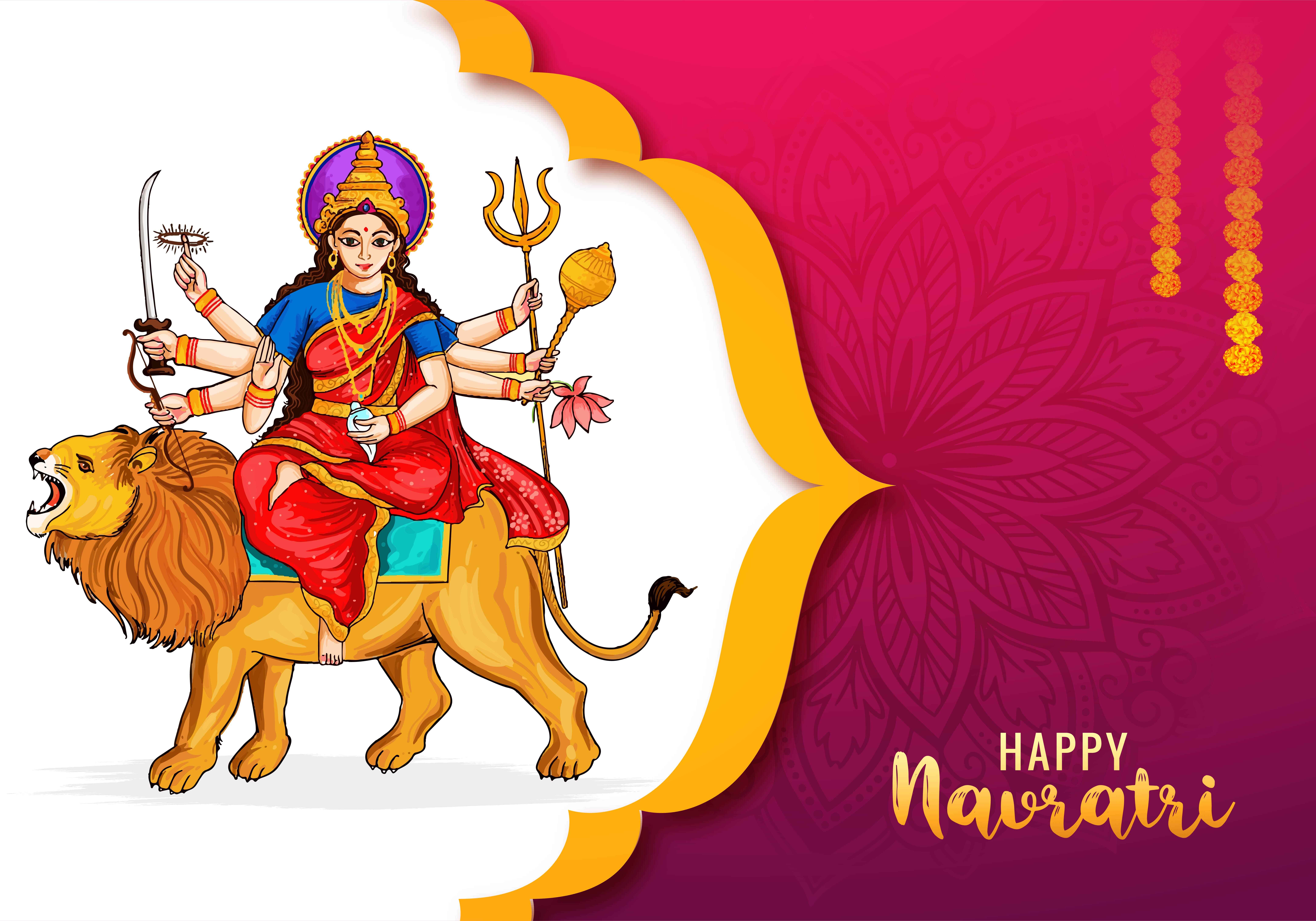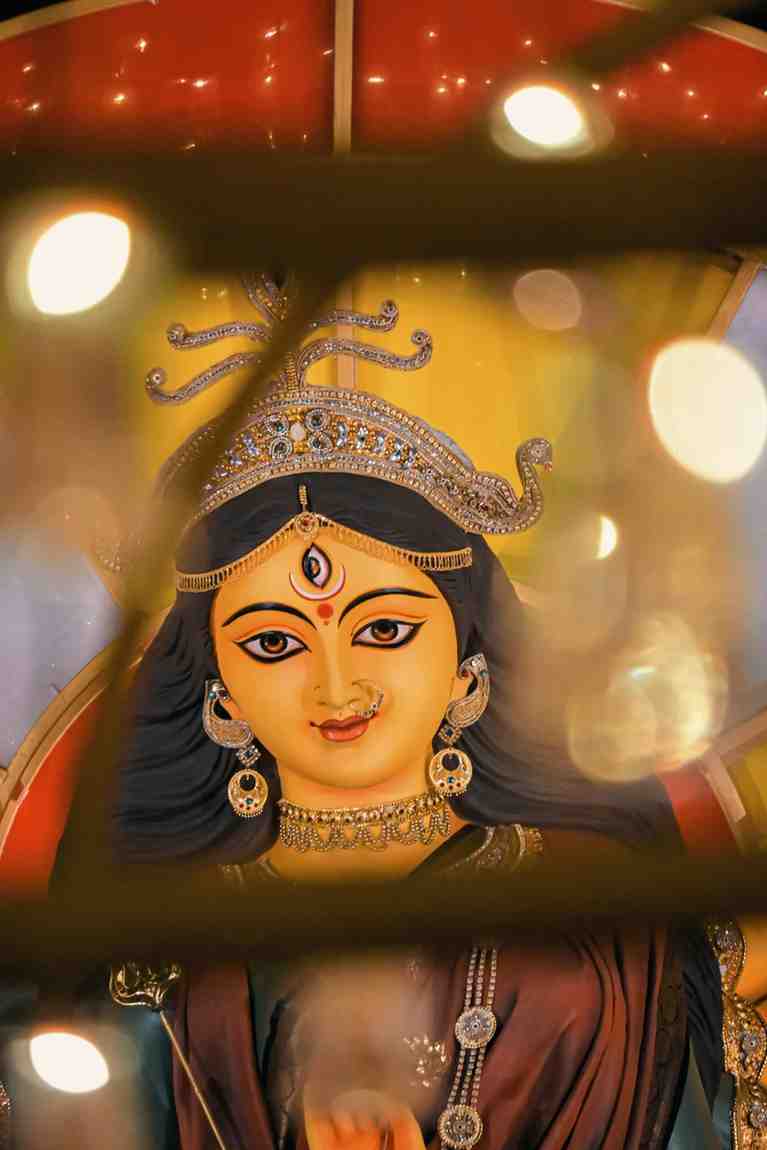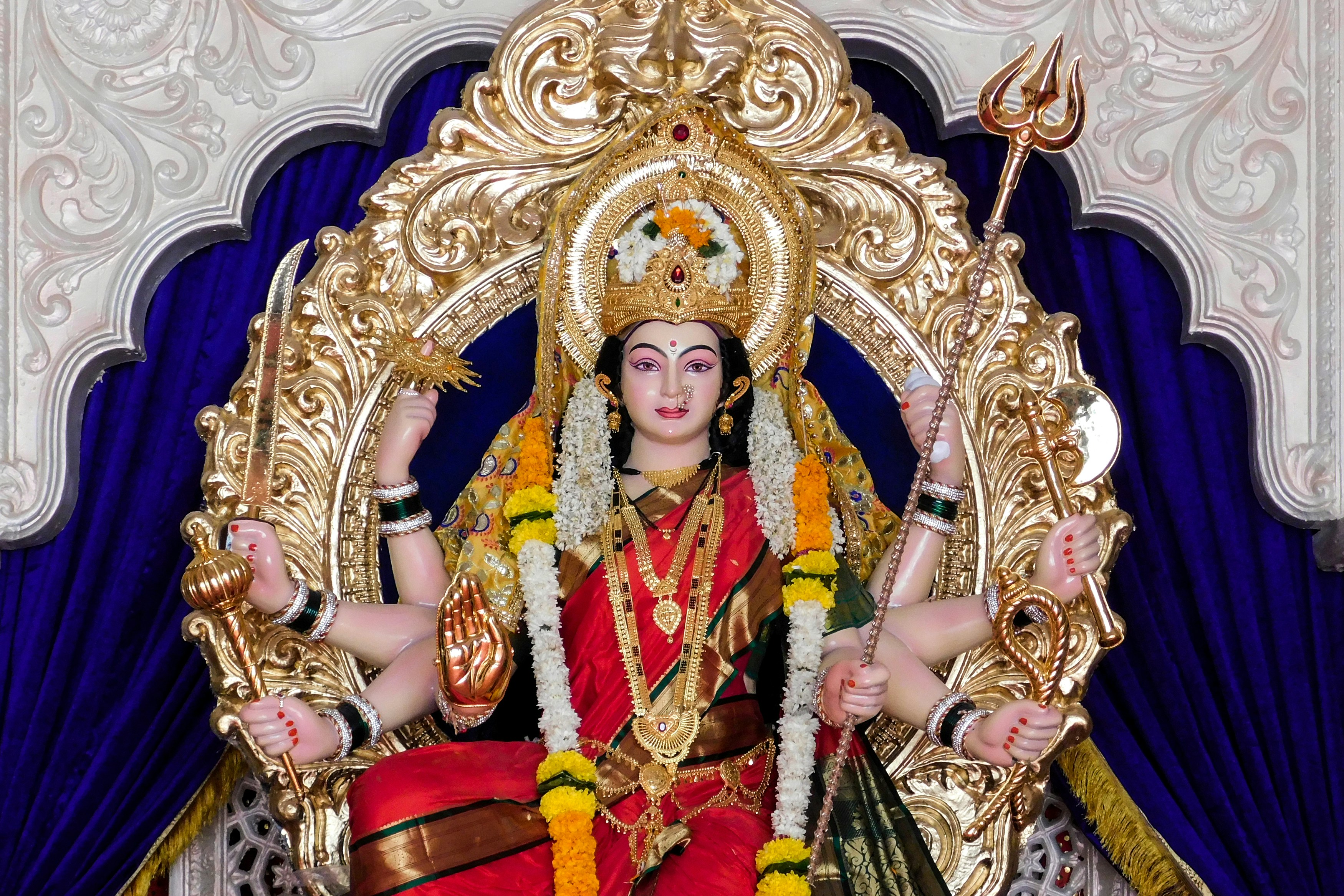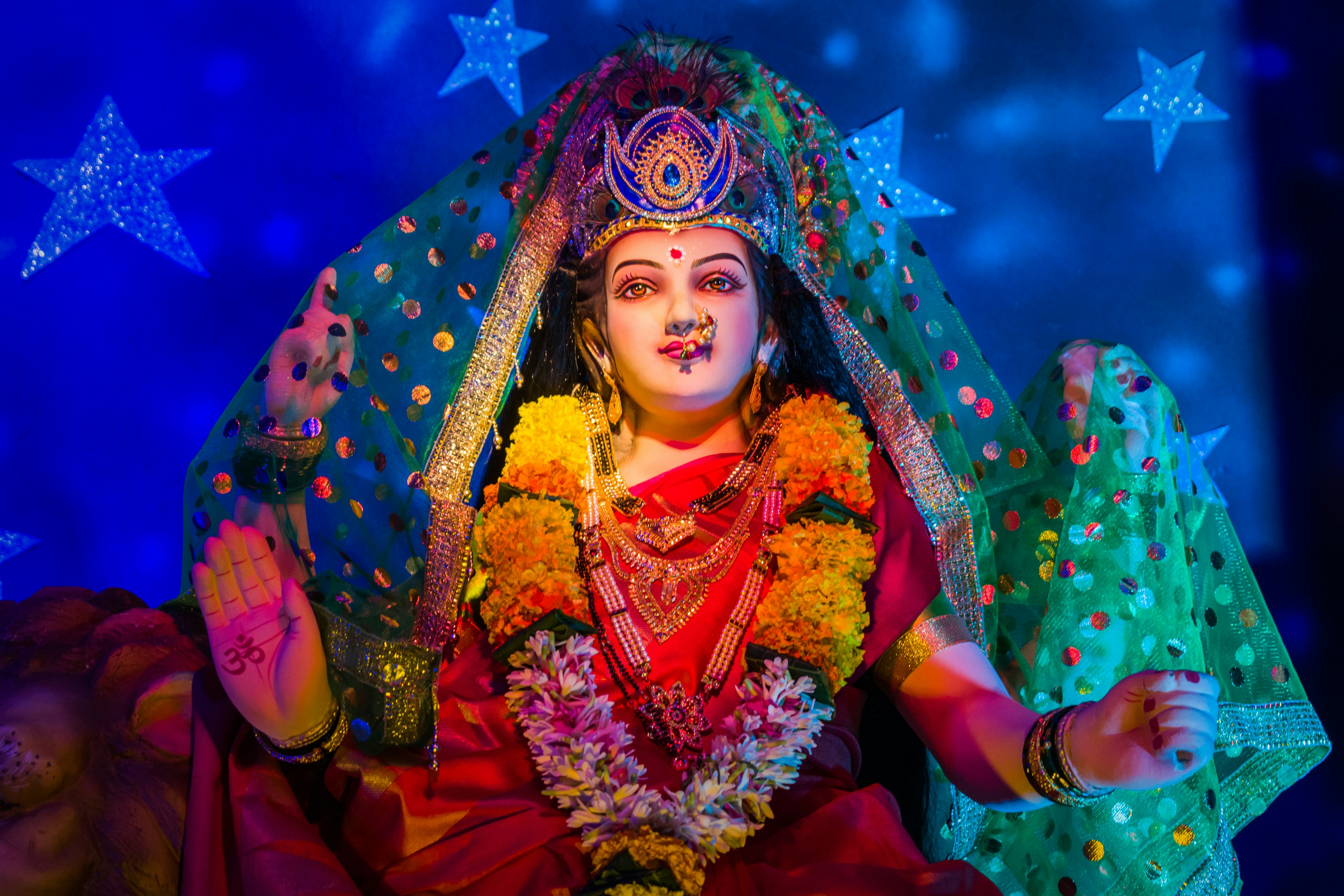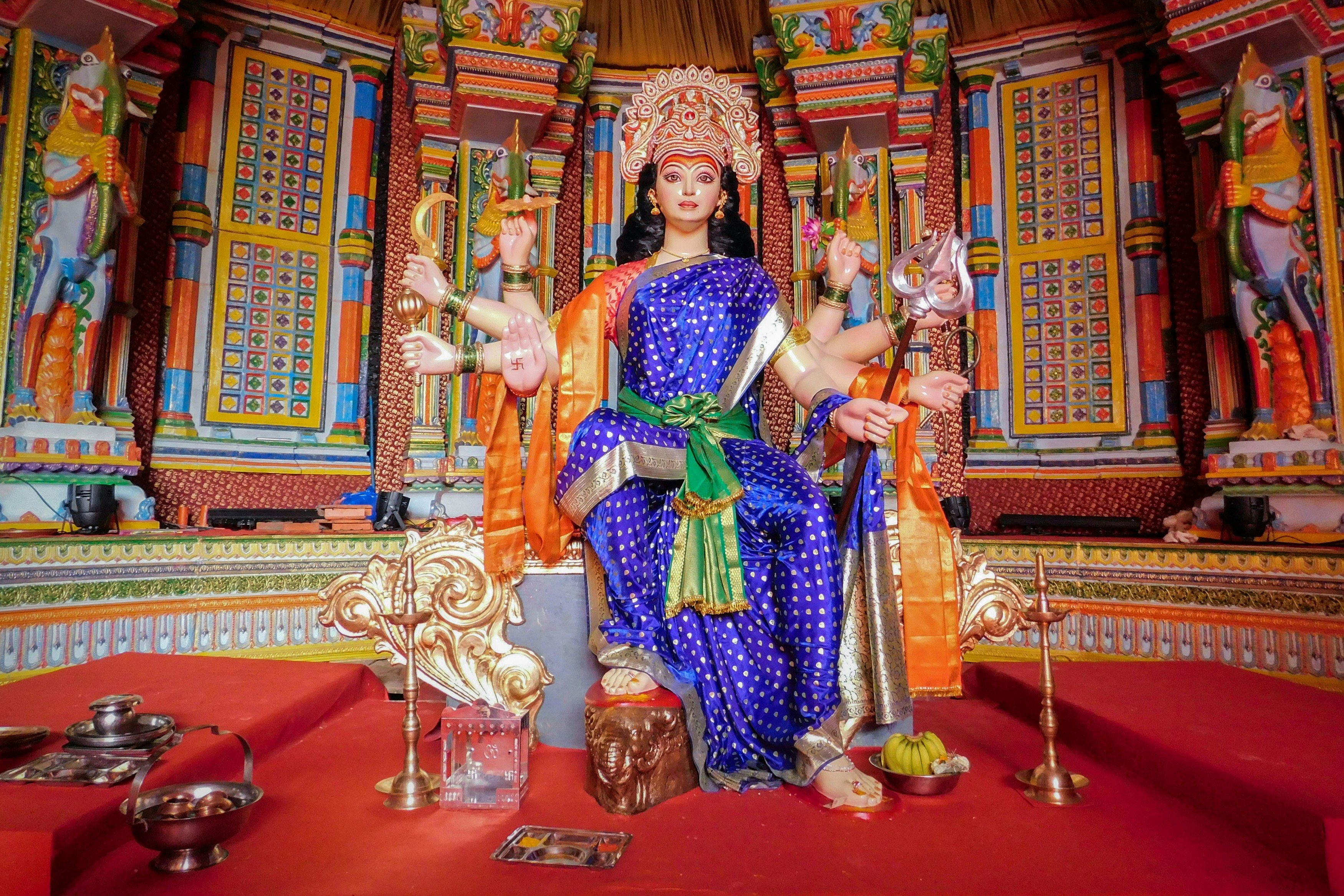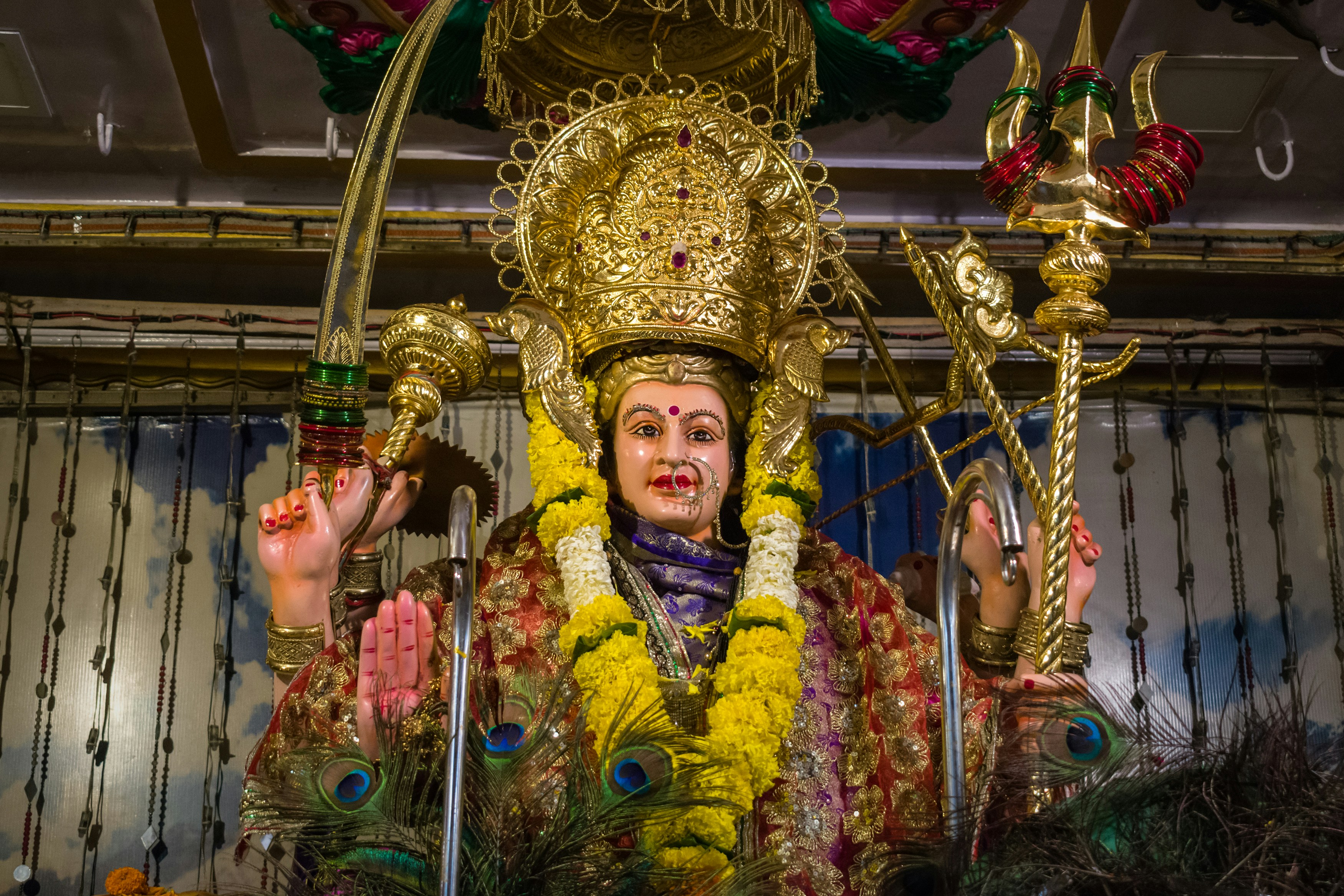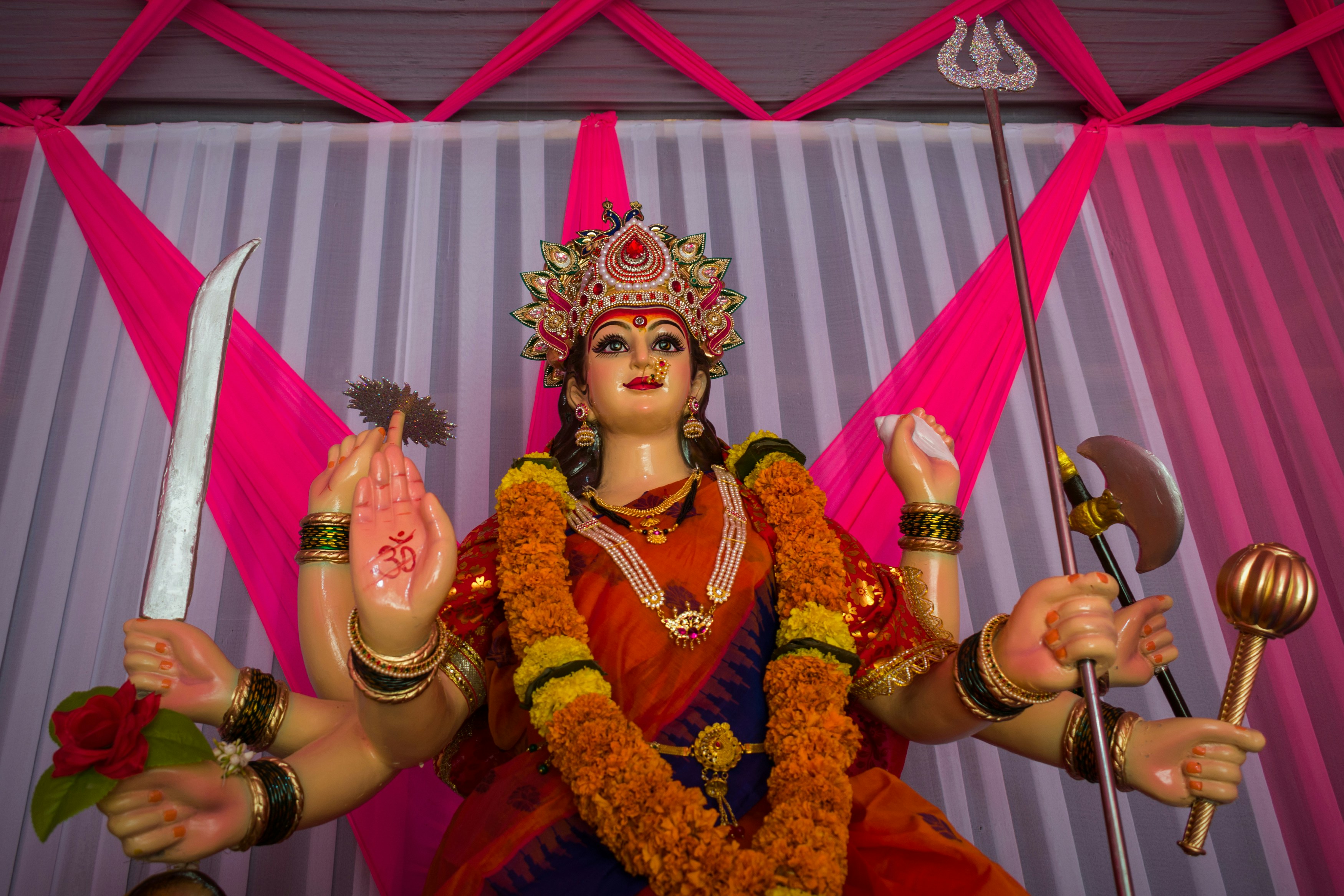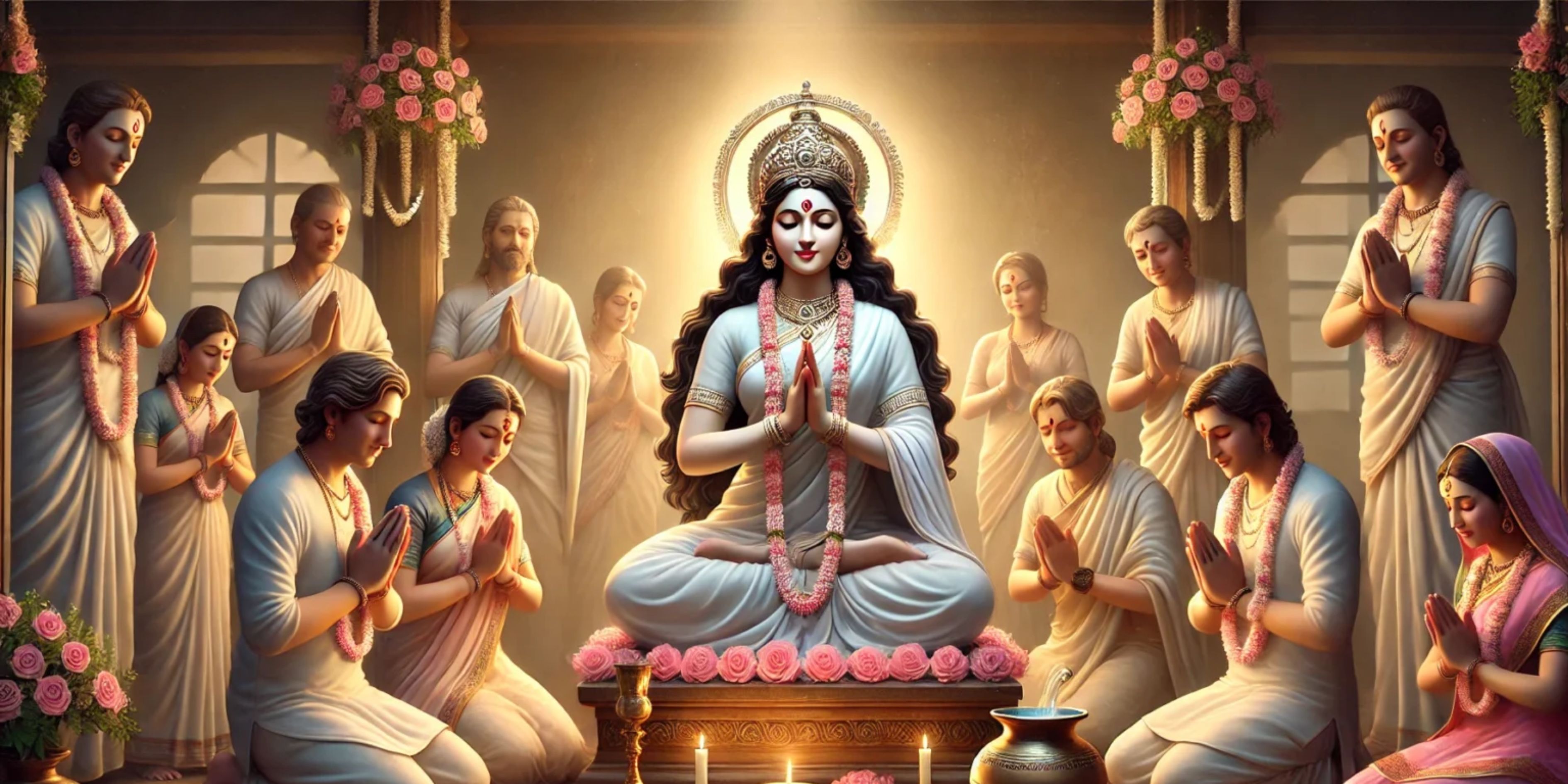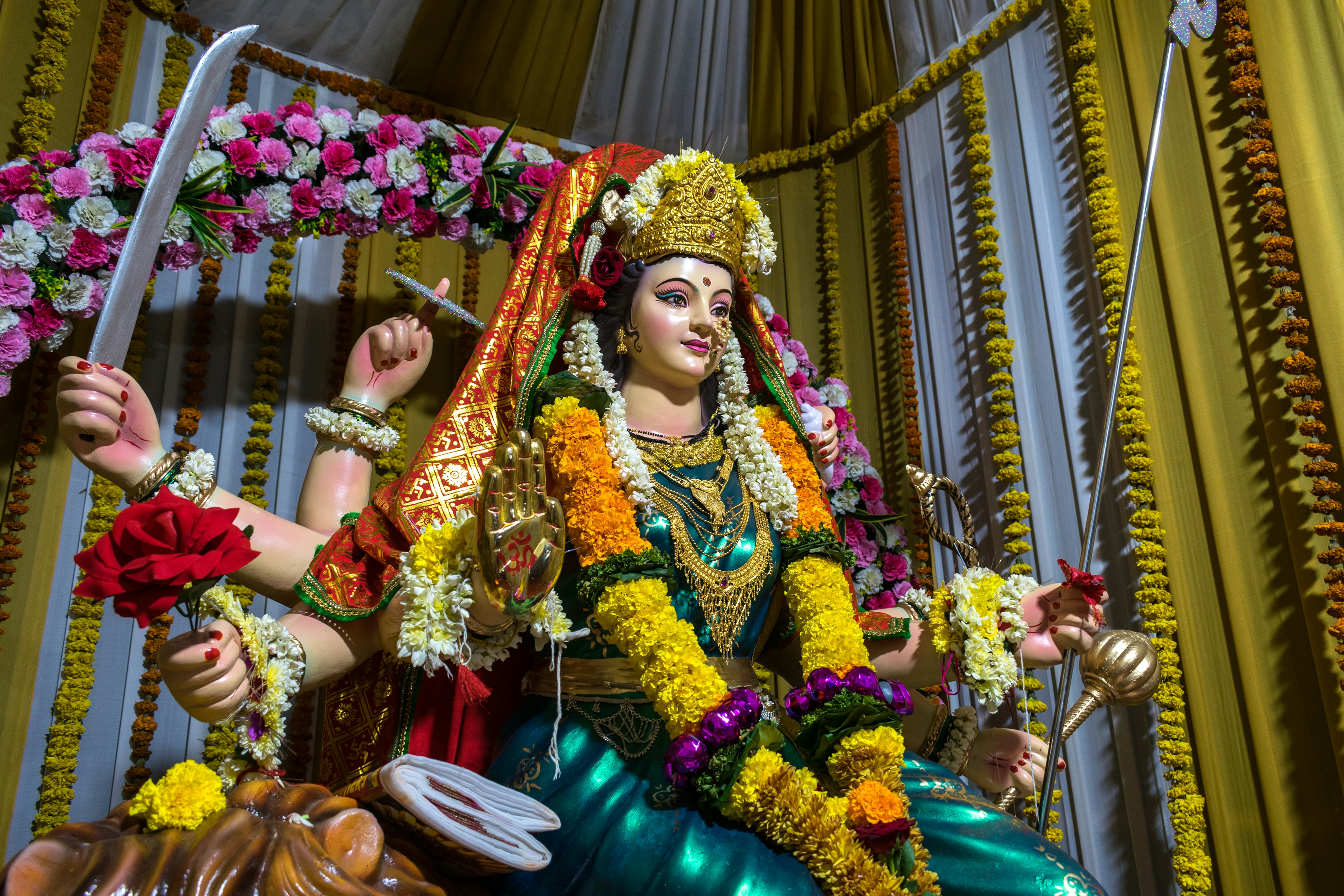Introduction | परिचय
The beginning of Navratri (नवरात्रि) marks an important shift in the surroundings. The transformation can be felt through minor cues. The temple bell's tones come through clearly during morning hours. Scents of newly made rangoli powder mix up with agarbatti smells. One talks to his neighbors, asking if the Kalash is ready yet. The young ones, in brand new clothes, run around, not understanding much of the puja but filled with eagerness to join in.
This year, Navratri starts on 22 September 2025. The very first day, Pratipada (प्रतिपदा), is of Maa Shailputri (माँ शैलपुत्री). Her puja initiates on nine holy nights, one after another. Families do Ghatasthapana (घटस्थापना), i.e., Kalash placing, in faith.
That's as good as starting afresh, just as lighting the first diya, keeping your hand stationary so the flame doesn't flicker out.
Maa Shailputri | माँ शैलपुत्री
That's how she got this name. Shail means mountain, and Putri means daughter. She is the Himalayas' daughter.
However, she harbors a more profound narrative. In her previous incarnation, she was known as Sati (सती), the offspring of King Daksha. Her devotion to Shiva was unwavering; nevertheless, her father's hubris proved to be more potent. During his yajna, when Shiva faced derision, Sati found it intolerable. She positioned herself near the flames and relinquished her physical form. Suffering transformed into an act of sacrifice. Subsequently, she was reincarnated as Parvati, daughter of the mountains, and assumed the identity of Shailputri. In pictures, she rides Nandi (नंदी बैल). A Trishul (त्रिशूल) in one hand, a lotus (कमल) in the other, and a crescent moon shining on her forehead. She looks calm, but there is unshakable power in her eyes. She is stable. She is strong. She is the reminder that even after destruction, life begins again.
The Timings | मुहूर्त और पूजा का समय
Every Navratri starts with the clock. Families open their almanacs and circle the time in red ink. The first day is always sensitive; start it right, and the next nine nights feel smooth.
Pratipada Tithi (प्रतिपदा तिथि) is observed from 07:11 AM on 22 September until 04:55 AM on 23 September.
Ghatasthapana Muhurat (घटस्थापना मुहूर्त): 07:11 AM to 09:35 AM
Abhijit Muhurat (अभिजीत मुहूर्त): 11:51 AM to 12:39 PM
Morning in most houses is filled with palpable urgency. Seniors keep reminding one and all, "Do it before muhurat gets over." Mothers hasten to complete making bhog on time. The young ones observe, feeling the significance even if they do not comprehend it in its entirety.
Color of the Day | रंग का दिन
पहला दिन सफेद को है.
White represents an air of purity, as it also represents heavier symbolism. Peace and purity come to mind as representative elements of this symbol. On this day, women often wear starched white sarees, men dress in crisp white kurtas, and children run happily in white frocks and shirts. The altar features jasmine or white marigolds. While in another part of the house, Kheer cooks in the kitchen, milk and cardamom scents fill the air.
Wearing white isn't a tradition alone. It's a reminder, begin clean, begin calm. The first step of Navratri is as pure as the color itself.
Puja at Home | पूजा की विधि और अन्य
Morning starts early. Floors are washed, rangoli drawn, torans tied. The puja space feels different, more alive.
What is needed (पूजा सामग्री)
A Kalash filled with water
Mango leaves (आम के पत्ते)
A coconut (नारियल) wrapped in white or red cloth
Akshat (अक्षत – unbroken rice)
Soil and barley seeds (जौ)
A lamp (दीपक), incense sticks (अगरबत्ती)
White flowers, fruits, and sweets made of milk.
How it is done (पूजा विधि)
The Kalash is placed carefully, filled with water, coins, and sacred items. Mango leaves are arranged at the top, and a coconut is placed on them. Next to it, soil is spread and barley seeds are sown. Over nine days, the green shoots grow tall, everyone watches them, checking each morning how much they have risen.
A diya is lit and placed near the Kalash. In many homes, this flame is kept burning without pause, the अखंड ज्योति, a steady reminder of devotion. Flowers are offered, bhog is placed, and mantras are chanted. And then the family comes together for aarti.
It's beyond ritual; it's an act of creating memory. Children participate by humming the aarti song, and grandparents close their eyes, and for some time, the whole family seems immersed in an attitude of devotion.
Mantras | मंत्र तथा प्रार
Chanting features largely in the day. The voice of the mantra echoes in one's room, softly at times, and at times forcefully.
Main Mantra (मेण मंत्र)
Om, prayers to goddess Shailaputri.
Om Devi Shailputryai Namah
Dhyana Shloka (ध्यान श्लोक):
वन्दे वाञ्छितलाभाय चन्द्रार्धकृतशेखराम्। वृषारूढाम् शूलधराम् शैलपुत्रीं यशस्विनीम्॥
The words roll easily off the tongue. And when a family chants together, it feels less like sound and more like atmosphere.
The Reasons for Her Reverence | Significance
Maa Shailputri is associated with the Muladhara Chakra (मूलाधार चक्र), i.e., the root of power in the body. It is not possible to initiate any journey without being grounded. Hence, she is worshipped first.
She bestows purity, courage, and stability through her blessings. To others, it represents peace of mind, and to still others, strength to endure hardship. To all, it represents the feeling of having laid strong foundations.
Her Story Retold | माँ शैलपुत्री की कथ
Shailputri's story is heard over and over again. The young ones have heard it during each Navratri, sometimes drowsy, sometimes with bright, blinking eyes.
She was Sati once, most devoted to Shiva. At her father's yajna, when Shiva was disrespected, she could not tolerate it. She walked into the fire, she being transformed to ashes, but her devotion remaining intact. She was reincarnated later as Parvati, this time in the mountains. Thus, she was Shailputri, the first to be worshipped as Durga in Navratri.
Not just a story. It's a lesson. That dignity counts. That passion can be strong. In the end, there's always the potential for a new beginning.
Throughout India | Cultural Importance
Day 1 doesn't feel different in America, but it has the same feeling.
In Gujarat, evening arrives in the form of Garba (गरबा). Rhythmic circles of dancing people move to dhol, clapping, spinning, losing themselves in religion and exhilaration. In Bengal, Durga Puja preparations intensify. In villages, one can see people at small temples, bringing flowers and coconuts. Apartment balconies in cities shine forth in diyas.
In homes, there is the scent of ghee lamps and agarbatti. The kids laugh during aarti, occasionally falling out of rhythm in their claps. Mothers serve fast food, typically sabudana khichdi or kheer, passing down recipes that have been passed down through centuries. The elderly tell stories, their voices strong, guaranteeing tradition continues.
Navratri is worship, yes. But it is also memory, music, food, and togetherness.
Conclusion | निष्कर्ष
The first day of Navratri is akin to the first note in a song. It precludes the mood for everything to come. Maa Shailputri, seated on her bull, armed with her trident and lotus, is the symbol of stability and bravery. Her puja, in fact, reminds us of all beginnings requiring purity and power.
By sowing barley, lighting the diya, wearing white clothes, and chanting her name, people attempt to seek out her blessings. This ritual goes beyond ritual practice; it includes the state of mind it induces in people, calm, composed, and ready for the impending nine-night journey.
As diyas shine and bhajans echo, there is an initial day of quiet confirmation: Navratri has arrived. Along with it, there's devotion, culture, and an experience of feeling part of something eternal. Jay Mata Shakti

